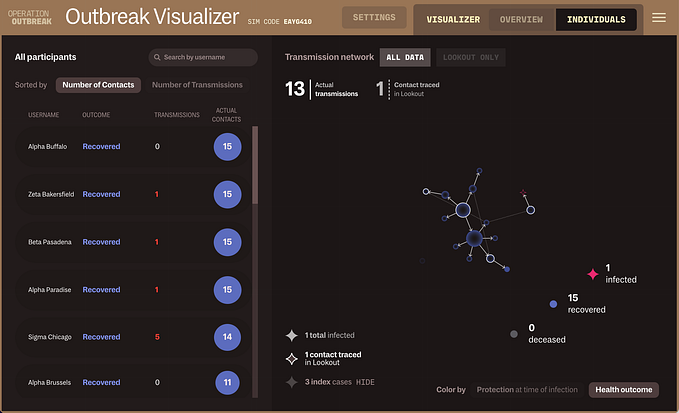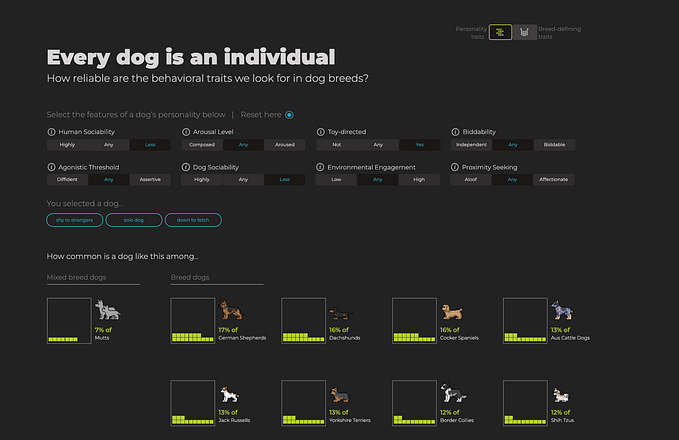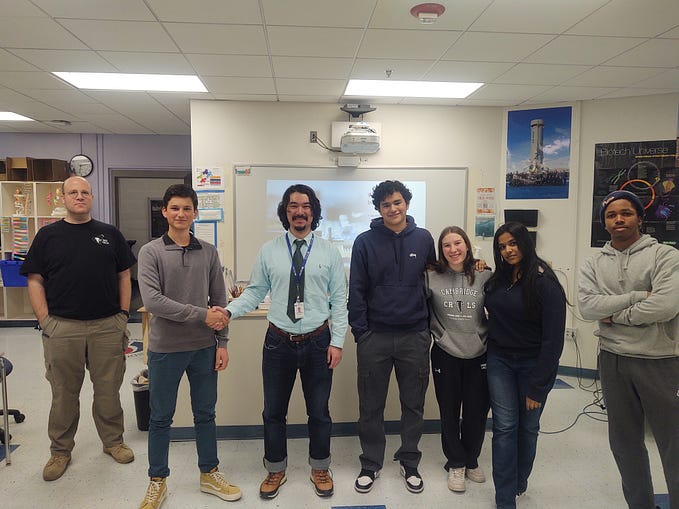Travel Healthy: a mobile app for international travelers to enable participatory surveillance of infectious diseases
By Andrés Colubri —
In 2022, our lab started a long-term collaboration with researchers at the Massachusetts General Hospital (MGH) Travelers’ Advice and Immunization Center, with the goal of creating an innovative platform for participatory surveillance of infectious diseases. The MGH travel clinic is the coordinating center of the CDC-supported Global Travelers’ Epidemiology Network (GTEN), overseen by MGH Drs. Regina LaRocque and Edward Ryan. GTEN’s aim is to reduce illness among high-risk international travelers, and the likelihood of disease importation into the United States.
The main outcome of this collaboration so far has been the development of a new mobile app, called Travel Healthy (TH), that provides an easy-to-use tool for participatory surveillance by U.S. international travelers and that generates high resolution data regarding travel-related illness. The TH app is available for any iPhone or Android user in the U.S., and some screen captures of its features can be seen below:
Our work on the TH app has been made possible by funding from the CDC obtained through GTEN. The initial version of the TH app, which was released on the Google and Apple stores in November of 2023, tracks daily symptoms — fever, upper respiratory infection (URI) symptoms, gastrointestinal (GI) symptoms, accidents/injuries, user-defined symptoms— and geographic location data of international travelers. The app was developed for research purposes, but is also available for personal use by any international travelers based in the U.S. In this latter modality, the data generated by users of the app remains securely stored in their phones and are not collected by GTEN.

We are very excited about this project, since it represents a unique opportunity for us to apply our skills in building health apps, including software development and user experience design for mobile devices, to the prevention and control of infectious diseases, and in partnership with recognized experts in the field. Beyond the app itself, which represents our main data collection tool at the moment, we envision the use of the data to construct advanced machine learning models that could predict the spread of emerging and re-emerging pathogens through international travel routes.
With this introductory write-up, we are starting a series of three articles where we will go over the details of the user experience design and software development (both app frontend and cloud backend). To read the complete series, please check the links below:
- Travel Healthy (Part 2): project architecture and full-stack development process
- Travel Healthy (Part 3): A user-centric design process
In what remains of this first article, we will provide some additional background and motivation for the development of the TH app.
The impact of global travel on infectious disease spread
Global trade and human travel have extended smaller and localized outbreaks into larger epidemics and worldwide pandemics. The total number of airline passengers doubled from just below two billion in 2000 to more than four billion in 2019. This massive increase in global connectivity brings with it new risks from both emerging pathogens and re-emerging/endemic diseases, as well as invasive vector populations, that are introduced to new geographical areas outside of their native range.

Throughout history, various modes of transportation — land, maritime, and now air travel — have facilitated the spread of epidemics. The figure below, adapted from Baker et al., illustrates some examples. Trade routes and wars likely spread epidemics in the Roman Empire, with the Antonine Plague being of the earliest historically documented outbreaks. Maritime travel during European contact with the Americas and the Atlantic slave trade brought diseases like malaria and smallpox. In our modern era, air travel quickly carried severe acute respiratory syndrome (SARS) coronavirus across 27 countries before it was contained. These few instances highlight the impact of transportation on disease dissemination. Recent trends, such as increased global air travel, trade, and urbanization, show the raising frequency of movement between urban centers and can result in an elevated likelihood of future outbreaks, compared with the past decades.

Leveraging international travelers as “sentinels of global pandemics”
From what we briefly presented in the section before, we hope it is clear that international travelers play a crucial role in the global spread of these pathogens due to their high mobility, increased risk of exposure to infectious diseases abroad, and the potential to bring these diseases from one country to another. The COVID-19 pandemic is the most recent example of the impact travelers can have in the global spread of infectious diseases. Another pertinent example is the worldwide dissemination of antimicrobial resistance. Motivated by these facts, we like to characterize international travelers as “sentinels of global pandemics”, and therefore we argue that they can contribute significantly to detecting and curbing infectious disease outbreaks.
However, determining the risk of travel-related infection is challenging due to limited data on both the number of cases among travelers and the overall traveler population. In cases of mild illnesses, travelers often do not report their symptoms and clinicians may not perform diagnostic tests. This is further complicated by the fact that travelers frequently visit multiple destinations, which makes exposure identification more difficult. Disease incidence in the local population may not fully apply to travelers due to differing behaviors, diets, accommodations, and preventive measures. Finally, varied study designs hinder comparison of findings, and conclusions from single-clinic or destination studies may not generalize to diverse traveler backgrounds.
Because of these challenges, we believe that the TH app represents a significant step forward in participatory surveillance, engaging U.S. international travelers in the self-reporting of travel-related illnesses. The always-on nature of smartphones and their abundant sensing capabilities, offers an invaluable tool to collect geo-located travel infection data in near “real-time”, meaning that we can see symptoms almost as they present in the travelers who are using the app.
In order to increase interest in the TH app, we also aim to make it a useful tool for the travelers, regardless of whether they report symptoms. During the development of the app, we performed a user survey with more than 200 respondents to identify several features that would enhance uptake and use of the app by travelers, and we have built them into the app. These features include a secure “travel health wallet” where travelers can keep relevant documents, a malaria medication reminder, and country-specific travel health notices retrieved from the CDC. Implementing these features was possible thanks to a modular architecture that allows us to easily add new functions and features into the app as needs arise and we receive feedback from users. With only the MGH travel clinic currently enrolling travelers into the research study, we are witnessing a steadily increasing number of users. However, as other clinics within the GTEN consortium adopt the TH app in the future, we anticipate a significant ramp-up in app usage.
A similar initiative, focused on European travelers and supported by the Swiss National Science Foundation, the Infection Tracking in Travellers (ITIT) app, records travel-related symptoms with associated geolocation and weather data. Initiatives like TH and ITIT not only facilitate the generation of high-resolution, real-time data about illness in travelers critical for early detection and response to emerging health threats, but also lay the groundwork for leveraging new computational techniques for disease forecasting and control.








